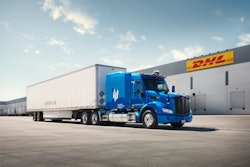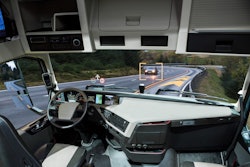How we choose to describe something very often constrains how we think about it. For example, placing the adjective “flat” in front of “Earth” possibly misled more than a few downstream researchers, navigators and map makers in ancient times, some even still.
Today’s autonomous vehicle (AV) developers describe the driving experience in terms of a square or other geometric shape with edges and corners. This immediately conveys that our experience is defined as a well understood solution space bounded on its known edges by the more challenging problems. The not-so-subtle message is that AV developers can look at the world and clearly scope the challenge of making it autonomous.
Aerospace engineers, who have been at technology development for a somewhat longer period of time, have a more restrained view of the real world. They describe it as a constantly evolving “envelope” of knowns and unknowns, the proven and unproven. They describe development in terms of “expanding the envelope” as the designs mature and get increased testing. They describe an infinite world outside the envelope as beyond the known capability of the vehicle they are developing.
"Pushing the envelope” then describes going beyond the known capabilities into that realm of unproven and unknown regions of performance. An airliner has a “flight envelope” in which it is reasonably expected to operate safely based on extensive analysis, testing and operational history. Every once in a while, the real world will reinforce that engineers’ understanding of the world is not perfect. Crash investigators eventually document the root cause of a failure, and the understanding of the envelope gets updated with more current and accurate information.
Implying the real world is a definable square with known edges and corners creates an impression of confidence — we can define the real world and design for it.” This mindset can be pervasive in a company or in a society. Imagine that first ship navigator who questioned authority in ancient times by suggesting that the world was actually not flat. Or Galileo observing that the planets actually rotated around the sun, not the earth. Those ideas were not well received.
History is full of moments where our understanding of the world has needed to change because it was, for lack of a better word, flawed. The messengers often suffer for pointing out the flaws.
A construct coming from physics is that the act of measuring anything tends to alter the measurement. This foundation is usually reinforced in engineers in their first college lab courses, and some get to revisit it again and again later in life. One example is fuel economy measurement. The traditional method was based on weighing a fuel tank before and after a test to see how much fuel had been used. This invariably required adding a small tank to the vehicle, usually between the tractor and trailer, which sometimes required a longer fifth wheel gap setting, which altered the aerodynamics, which altered the fuel economy. The latest methods employ fuel flow meters spliced directly into the fuel lines. These also impact what is being measured, but with less alteration to the vehicle and the fuel system.
Measuring is the first step in understanding a system. Metrics clarify what is known and often highlight what is not known.
I recently had the good fortune to attend Chris Atkinson’s SAE Buckendale Award presentation at SAE COMVEC 2021 in Chicago. He is Professor and Director of Smart Mobility at Ohio State. The purpose of the SAE Buckendale Award includes helping educate engineers, particularly younger entrants to the field. NACFE has some perspective on this with three past awardees in 2007, 2016 and 2020.
Atkinson presented his insights into the AV truck world. He stated that an autonomous truck is often described as a supercomputer on wheels. Atkinson said that was not accurate, they really are multiple supercomputers. He went through the math on sensor output calculating that each autonomous truck could produces 40 terabytes (TB) of data a day.
To put that in perspective, today many current laptop computer models are seeing one to two TB hard drives. Other insights:
· Investment in AVs since 2010 is ~$ 220 Billion and growing.
· 100+ million lines of code are needed for automated vehicles.
· Cost to develop is $100 per line of code (LOC) — industry typical rule of thumb to create code.
· Developing 100 million LOC at $100/LOC equals $10B.
· Processors will need to handle 30 to 300+ trillion operations per second (TOPS).
· Processors will complete 1,000 trillion floating point operations per second (TFLOPS) per vehicle.
· Artificial intelligence is a requirement for AVs.
· Data will need to be collected at 1.5 Gigabytes/second.
· Data communications and networking needs 100 Megabytes/second.
· SAE Level 4-5 automation increases vehicle complexity by a factor of 6 to 8.
· Power demand is high for all the computer systems and sensor packages — multi kW.
· There are an estimated ~300 to 3,000 discrete semiconductors per vehicle.
While some of these metrics may only have meaning to the more computer literate, the dollars should be more readily recognizable. Investment in new diesel truck models going into production can range from hundreds of millions of dollars to a few billion dollars. One estimate of the cost of the Air Force B-2 airplane program adjusted for inflation to 2019 is $83 billion. $220 billion in AV investment for road vehicles since 2010 is a significant number.
The road to SAE Level 4/5 automation for trucking involves significant investment and complexity. As I listened to many AV industry representatives at a variety of industry events this September, the consistent message was of self-confidence in the industry, that AVs are a just a matter of time and money, and all risks will be duly mitigated through responsible engineering. I applaud their efforts to date. However, I feel that the AV world and the general public have a good deal of maturing to do on communicating about automation.
A starting point is recognizing publicly that the real world is pretty complex and that replacing a human driver is difficult and capital intensive. Perhaps we need to take lessons from other industries. Aerospace engineers have learned the hard way over decades that overselling and under delivering is not a sustainable road to successful vehicles where human safety is involved.
It can start as simply as describing the world not as a square with seemingly known edges and corners, but rather as an ever-expanding envelope of knowns and unknowns, the proven and the unproven.
Rick Mihelic is NACFE’s Director of Emerging Technologies. He has authored for NACFE four Guidance Reports on electric and alternative fuel medium- and heavy-duty trucks and several Confidence Reports on Determining Efficiency, Tractor and Trailer Aerodynamics, Two Truck Platooning, and authored special studies on Regional Haul, Defining Production and Intentional Pairing of tractor trailers.











